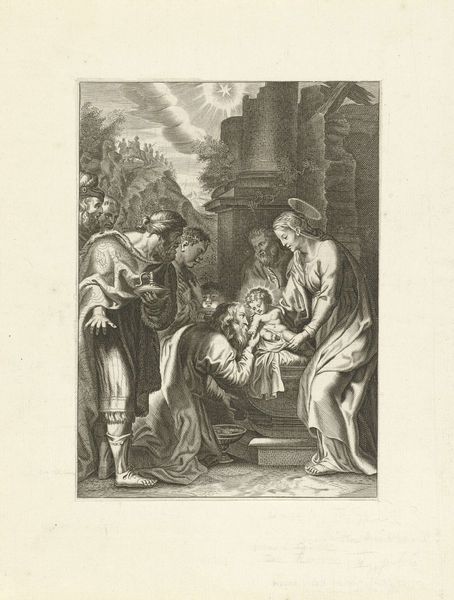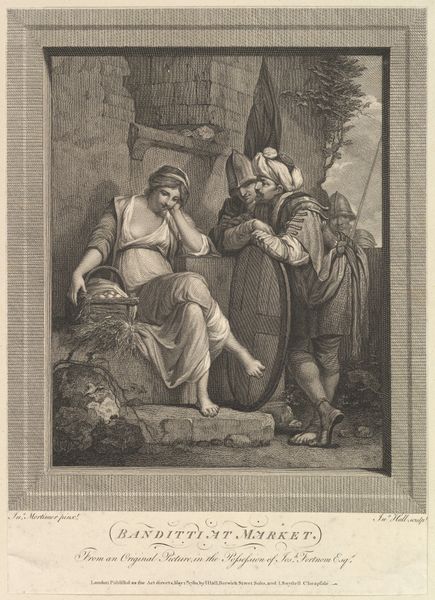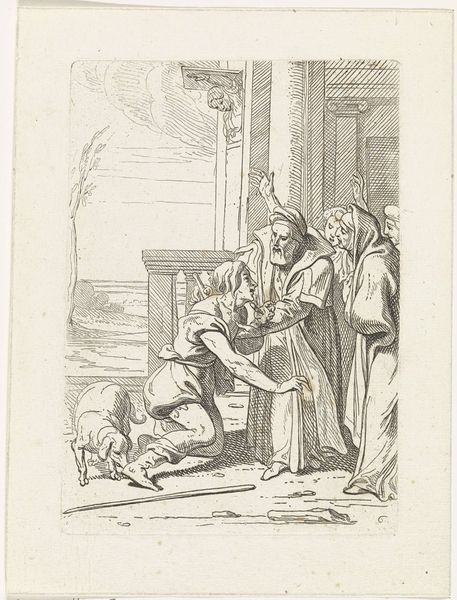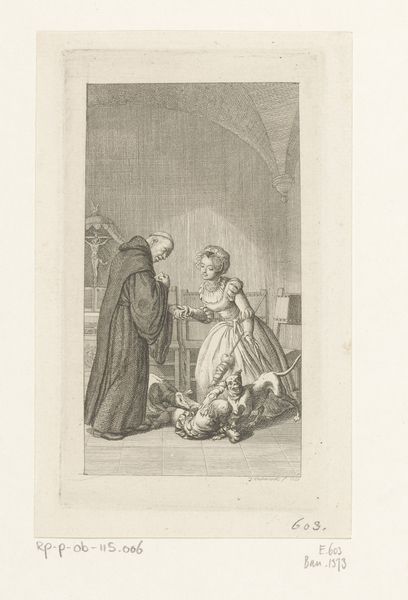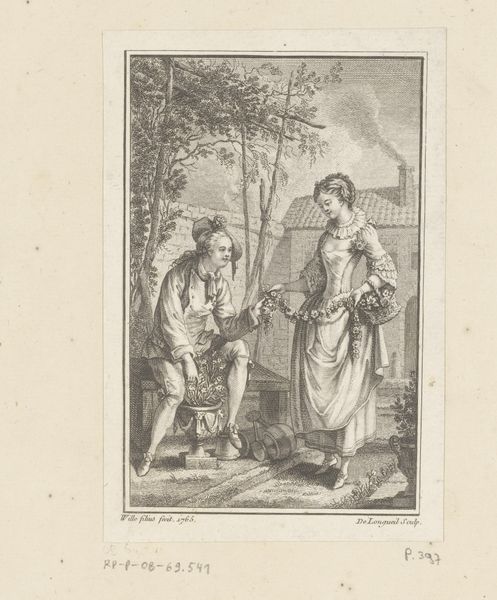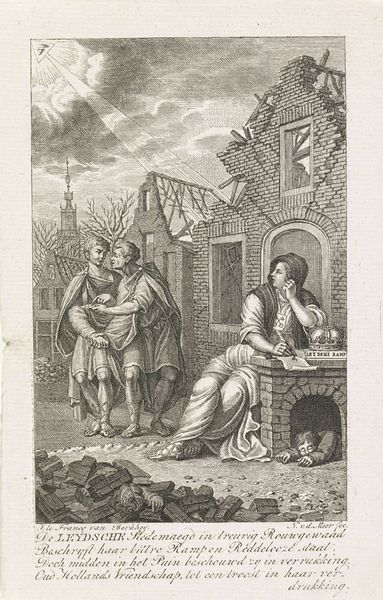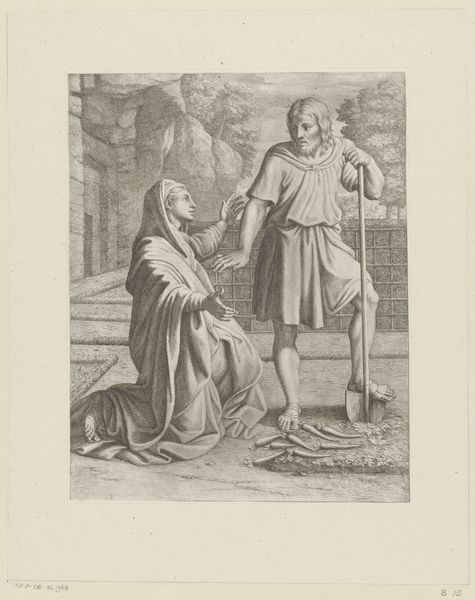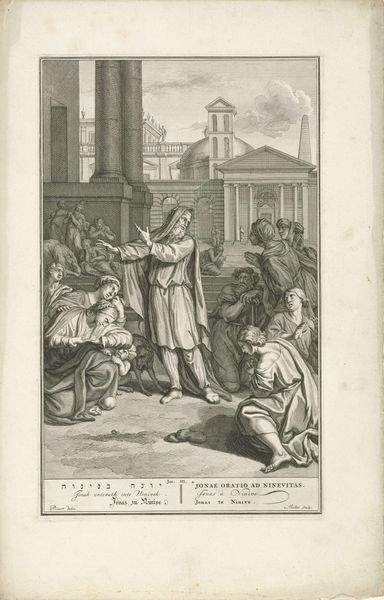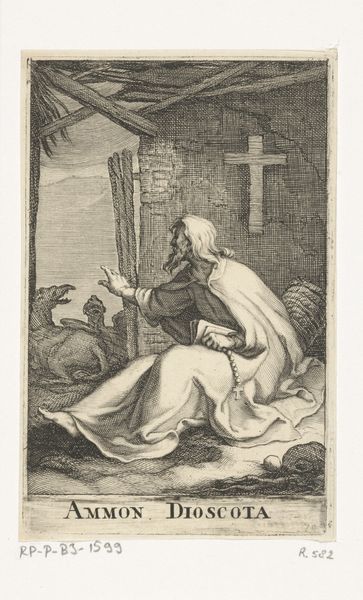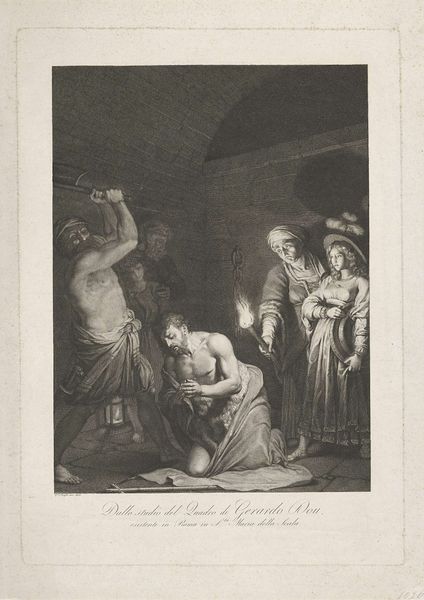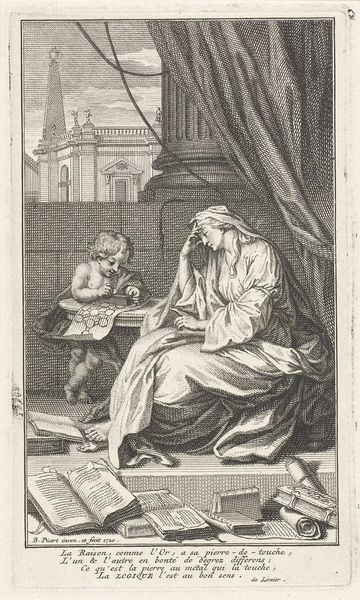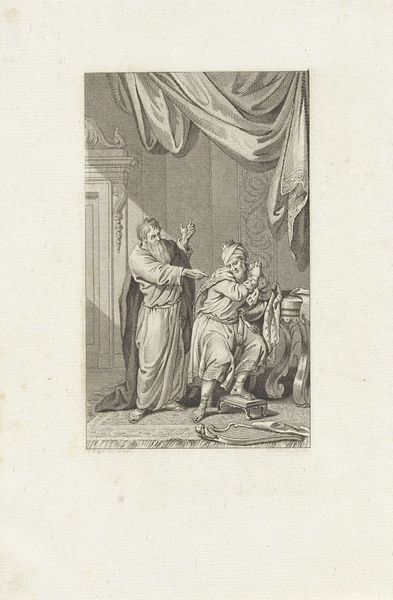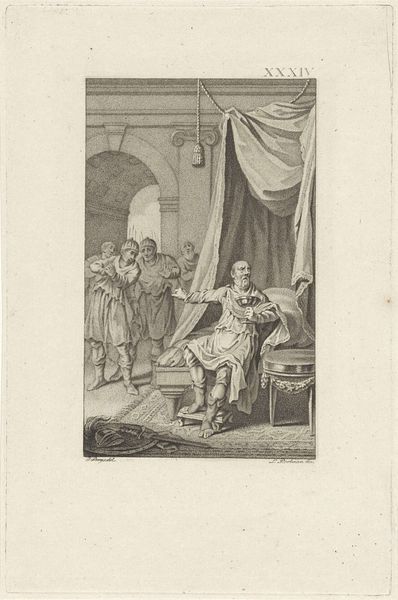
print, engraving
#
portrait
#
narrative-art
# print
#
figuration
#
romanticism
#
genre-painting
#
engraving
Dimensions: height 95 mm, width 74 mm
Copyright: Rijks Museum: Open Domain
Editor: Here we have Philippus Velijn's "Man met pijl en boog bij een vrouw met een kind," or "Man with bow and arrow by a woman with a child," created in 1823. It’s an engraving, with incredibly fine lines. It feels… staged. A genre painting perhaps? What strikes you most about this piece? Curator: The immediate visual echoes point to ideas of protection and provision. The archer, a masculine symbol of skill and hunting, stands in contrast to the mother and child – an archetypal representation of nurture and vulnerability. Consider the bow and arrow; is it a threat, or simply a tool? Editor: I hadn’t thought of the bow as a potentially threatening symbol. Is that tension intentional, do you think? Curator: Perhaps. Or, consider the gaze of each figure. The archer’s eyes are cast downward toward the child, suggesting affection, while the child reaches for him. Are we witnessing a tender moment, or something more complex? The background too suggests an opening, with both figures poised between safety and the world beyond. Editor: So the gateway suggests uncertainty… what’s in the open terrain versus the safety behind? The posture seems significant as well, right? His bow, while potent, isn't actively aimed. Curator: Precisely! And that ambiguity is key. Velijn is drawing upon deep wells of cultural understanding about family, gender roles, and our relationship with the wild, challenging us to unpack these notions. What does it tell you about its contemporary audience’s beliefs or hopes for family and home? Editor: I see. It’s less about a snapshot of life, and more about… ideals, or perhaps anxieties around those ideals? It seems like so much more than just a simple genre scene. Curator: Exactly! These images become powerful because they speak to deeply held beliefs. A romanticized look backward. And seeing how they visually express these feelings gives them historical weight, it tells their own story.
Comments
No comments
Be the first to comment and join the conversation on the ultimate creative platform.
